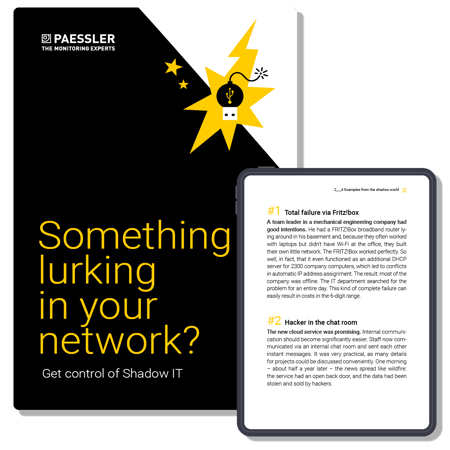
Get your free ebook and learn how to get control of Shadow IT
Any IT infrastructure that is developed and built without the IT department is typically called Shadow IT. From private smartphones and USB sticks to new cloud services, to private printers brought into the office - Shadow IT takes on many forms.
* You will receive further information about our products and services via e-mail. You can object to receiving this information at any time at privacy@paessler.com.